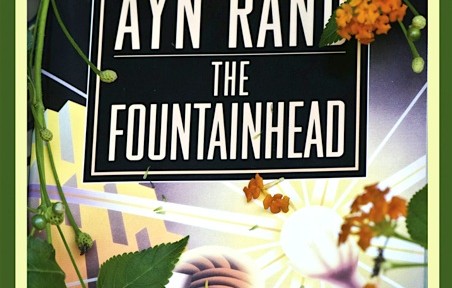Fifty years ago this week Ayn Rand published one of her greatest novels, Atlas Shrugged. Ayn Rand has always had a strong cult following. I can’t say I’m one of them but I do like her books, and this week’s anniversary of Atlas Shrugged put me in mind of my favorite Rand novel, The Fountainhead, published fourteen years earlier. I love the protagonist of The Fountainhead, Howard Roark.I have to admit that as a gardener I wish the book was about a landscape designer, but it isn’t; he is an architect. Still, the principles are the same: the creation of art that one can walk through and live in. Walking through a beautiful garden is very similar to walking into a well designed building.
So, I thought I might share with you some wonderful quotes in The Fountainhead that I think have relevance to you and me when we create gardens, and they have relevance as well when we visit gardens. To create a garden, if I’m not overstating the fact, is a magnificent enterprise. As I said last week, we take raw materials such as water and stone, earth and plant material; and we create an outdoor atmosphere. I’m convinced that a good garden actually enters your soul as you walk through it. We are bettered by the experience.
With this in mind, here is one of Roark’s clients opinion on living in a Roark house:
“I felt that when I moved into this house, I’ll have a new sort of existence and even my simple daily routine will have a kind of honesty or dignity I can’t quite define. Don’t be astonished if I tell you that I feel as if I’ll have to live up to that house.”
Don’t you want to be in gardens or create gardens that ennoble people’s lives? I do. Sometimes when I listen to a piece of music from Mozart, I want to be a better man. When things are good, truly good, then the world is a better place. I’ve walked into gardens, for example on vacations, and actually and literally sighed with satisfaction just by entering them.
Now, let’s think again about those raw materials that go into a landscape. At the very beginning of the book, the protagonist Roark considers the natural world around and “he looked at the granite. To be cut, he thought, and made into walls. He looked at a tree. To be split and made into rafters. He looked at a streak of rust on the stone and thought of iron ore under the ground. To be melted and to emerge as girders against the sky. ‘These rocks,’ he thought, “are here for me; waiting for the drill, the dynamite and my voice; waiting to be split, ripped, pounded, reborn; waiting for the shape my hands will give them.’”
This is a great piece of writing, isn’t it. It expresses so much about the creative process of building a structure or even planting a landscape. When Capability Brown, the great English landscaper of the18th Century, came onto the landscaping scene, England was never the same. In many ways it was a violent process. Forests were cut and planted, creating marvelous views. Earth in great quantities was moved from place to place, producing undulating landscapes that are now almost iconic in England as the epitome of landscape design. But you don’t have to have great sprawls of land to be creative. An apartment dweller can fill clay pots and plant them in a myriad of creative ways. If it is done well, the doorstep is bettered by it. The point is gardeners use raw materials, as well, just like the architect, with one important, amazing difference. We take living things, while the architect manipulates mere inanimate material.
Oh, I could go on and on. I have page after page of notes from The Fountainhead, but I’ll stop here. I can only say Ayn Rand was a great author. Every time I read The Fountainhead I want to be more creative.

